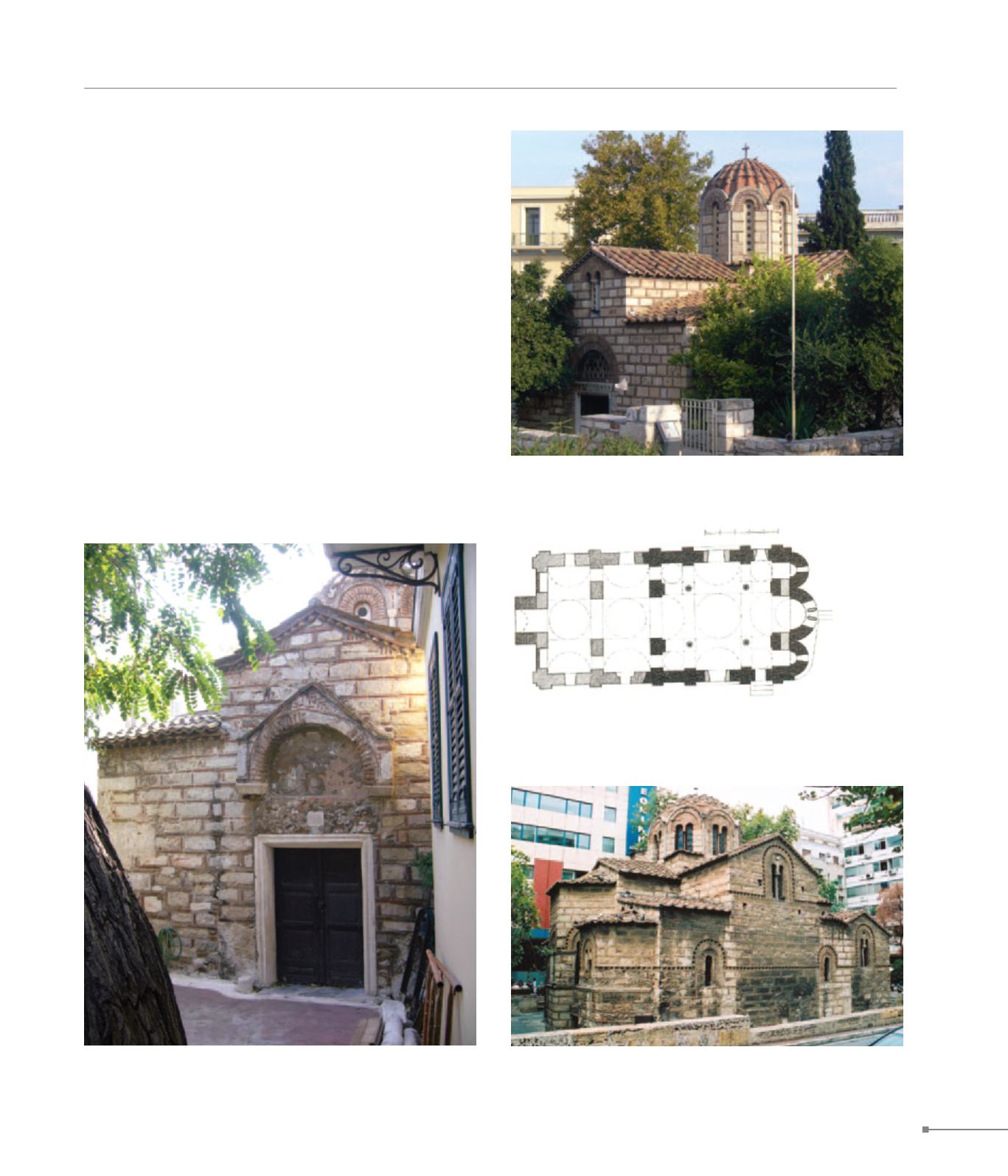
Athens. Athenai.
Athens. Athenai.
CENTRAL GREECE
197
they would form, along with the Acropolis, a fortification system
with three defence lines. Yet, the closing of philosophy schools
by the same emperor in 529 marked the beginning of Athens’s
gradual decline, as it was no longer an educational centre. This
is indicated by the unworthy buildings that occupied part of the
Agora, many of which housed workshops. In 662-3 Emperor
Constans II wintered in the city and his stay has been associat-
ed with repairs to the large public complex of the Agora, which
was afterwards deserted. The fortification of Athens proved to
be effective against Slavic raids in the 7th c.
In the so-called “dark ages” that followed, Athens was again
reduced to within the Late Roman walls and lost its urban char-
acter. This period ended in the mid-9th c., when the city began
to flourish once again, with building activity expanding outside
the walls. Most of the surviving Mid-Byzantine churches in Ath-
ens are monastery catholicons attesting to the city’s prosperity,
especially in the 11th c. The earliest surviving catholicon is that
of Asomatoi at Petrakis monastery, a complex cross-in-square
church dating from the late 10th c., which, despite subsequent
additions and degradations, preserves its original characteris-
tics to a significant extent, displaying similarities with the capi-
257. Athens, Petrakis monastery catholicon, ground plan (Αθήνα, μονή
Πετράκη, καθολικό, κάτοψη)
257. Athens, Aghioi Asomatoi at Theseion (Αθήνα, Άγιοι Ασώματοι
Θησείου)
257. Athens, Aghioi Theodoroi at Klauthmonos square (Αθήνα, Άγιοι
Θεόδωροι πλατείας Κλαυθμώνος)
257. Athens, Saint John Theologos at Plaka (Αθήνα, Άγιος Ιωάννης
Θεολόγος Πλάκας)


